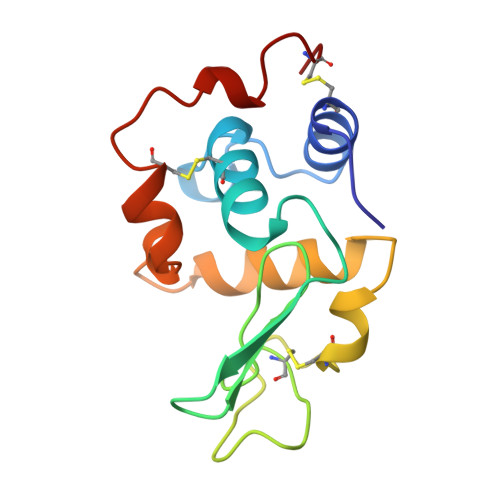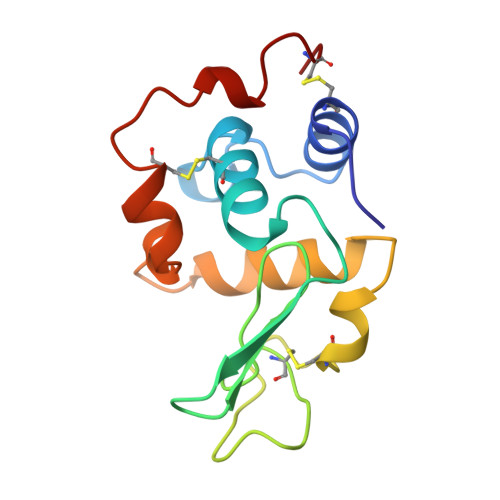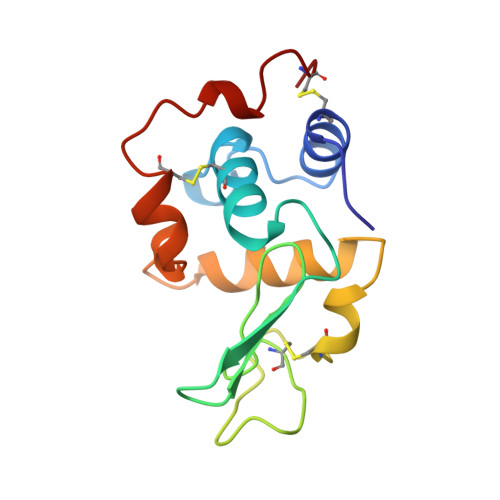A general rule for the relationship between hydrophobic effect and conformational stability of a protein: stability and structure of a series of hydrophobic mutants of human lysozyme.
Takano, K., Yamagata, Y., Yutani, K.(1998) J Mol Biology 280: 749-761
- PubMed: 9677301
- DOI: https://doi.org/10.1006/jmbi.1998.1906
- Primary Citation of Related Structures:
2BQA, 2BQB, 2BQC, 2BQD, 2BQE, 2BQF, 2BQG, 2BQH, 2BQI, 2BQJ, 2BQK, 2BQL, 2BQM, 2BQN, 2BQO - PubMed Abstract:
To get a general rule for the relationship between hydrophobic effect and conformational stability, five Ile to Val and nine Val to Ala mutants (3SS mutants) from 3SS (C77A/C95A) human lysozyme were constructed. As known from previous studies, the 3SS protein lacking a disulfide bond between Cys77 and Cys95 is destabilized by enthalpic factors, as revealed by a decrease of about 20 kJ/mol in the denaturation Gibbs energy change (DeltaG) value, as compared to the wild-type protein, which has four disulfide bonds. In this study, the stabilities and structures of the 3SS mutants were determined by differential scanning calorimetry and X-ray crystal analysis, respectively, and compared with those of the mutants (4SS mutants) from the wild-type (4SS) protein published previously. The stabilities of all the 3SS mutants, except for V110A-3SS were decreased as compared with that of the 3SS protein, coinciding with the results for the 4SS mutants. The change in the denaturation Gibbs energy change (DeltaDeltaG) values of the 3SS mutants relative to the 3SS protein at the denaturation temperature (49.2 degreesC) of the 3SS protein at pH 2.7 were similar to those of the equivalent 4SS mutants relative to the wild-type at 64.9 degreesC. The Delta DeltaG values of the 3SS mutants correlated with the changes in hydrophobic surface area exposed upon denaturation (Delta DeltaASAHP) for all of the hydrophobic residues when the effects of the secondary structure propensity were considered. This correlation is identical with that previously found for the 4SS mutants. The linear relation between Delta DeltaG and Delta DeltaASAHP for all of the hydrophobic residues with the same slope was found also for the mutants of T4 lysozyme already reported, indicating that this is a general relationship between changes in conformational stability and changes in ASA values of hydrophobic residues due to mutations.
Organizational Affiliation:
Institute for Protein Research, Osaka University, Yamadaoka, Suita, 565-0871, Japan.
















